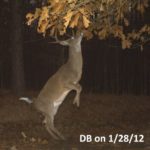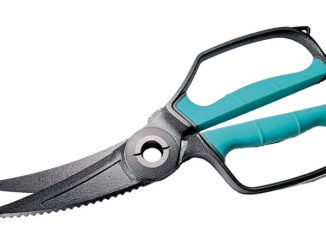
Get the jump on that mature trophy
Whenever I bring up the topic of mature bucks, I am referring to that segment of the buck population that is aged 5 ½ years old or older. True “mature bucks” can be as rare as proverbial “hens teeth” in most populations in the whitetail’s range.
Besides being wily and super elusive, mature bucks are tough targets simply because they so rarely occur, given the realities of hunting pressure and other factors that affect deer herd demographics and age structure.
Any reader who has run trail cameras for at least a season or two, regardless of where the hunting property is located, can attest to how difficult it can be to snag surveillance photos of truly mature bucks.
Now, before we get too carried away with this subject and assign too many ghost-like attributes to this classification of buck, let’s set the record straight: Mature bucks, if they are even present at all in a given local, make up only a tiny fraction of the deer population — which alone greatly decreases your odds of seeing one from your deer stand or of photographing one with a trail camera.
Any buck that has survived through five or more hunting seasons has automatically demonstrated that he is, by definition, reclusive and has developed extremely sharp senses. Thank goodness for the annual rut, or we would seldom even see a truly mature whitetail buck.
After enjoying more than 40 deer seasons, I have quite naturally gravitated over time to the pursuit of big, old, mature whitetail bucks. This is a natural and expected progression for many of us old timers, but we all can still vividly recall the adrenalin-fueled shakes of our younger years at the mere sight of a fork-horned buck.
Let me now recount some of the particulars of a recent deer season during which I doggedly pursued one particular old buck that came to be known on our hunting property by the moniker, “Dad’s buck.”
I really wanted to get a crack at that buck, and I guess a twinge of selfishness must have crept in when it came time for me to give him a name. For the sake of brevity, let’s just refer to him as “DB,” just like we did throughout that deer season.
Our very first trail cam photo of DB was taken in late November during Central Mississippi’s pre-rut period. It was just a single photo of him face-on leaving an active communal scrape, but as they say, “One photo is worth a thousand words.”
He was a huge, heavy, main-frame 8 with a small ninth crab-claw point near the end of his left main beam. He was a real eye-popper in most anyone’s book.
Ole DB was almost certainly a range-shifter buck, as he had not triggered a photo before that date anywhere else on the property, and we had had a virtual web of cameras in place for a number of weeks.
From that point forward, DB became a regular as he routinely cycled back and forth from one side of our property to the other.
In the later part of December, with the rut in full swing, DB was being alternately photographed moving back and forth between major scrape sites and through travel corridors. His primary mission was definitely trolling for estrus does, but I could not seem to place myself in the right place at the right time to intercept him.
Yes, as you might already deduce, my quest for DB had become an obsession. We began to plot his movements on legal pads and aerial photos, and a rough pattern began to emerge.
As mentioned earlier, my main passion when it comes to whitetail deer hunting involves finding a mature buck and then matching wits with him on his terms in his living room. Trail cameras have become for me an indispensable tool in this annual pursuit.
I tried unsuccessfully week after week to second guess this buck. When I thought he would be over here, he would be over there; I would adjust, and then he would be photographed where I had been previously.
Using my trail camera web, over time I had become very adept at knowing where he had already been, but his regular comings and goings were just random enough — and my available days to hunt were just few enough — that I could not for the life of me cross paths with him from a deer stand.
By mid- to late January the deer season was rapidly drawing to a close, so in desperation I sat down and thought hard about what else I could do to figure out his travel patterns. What stood out was that he had begun to establish a fairly regular circuit around the property, and if I could just determine what direction he tended to use coming and going from some of the camera sites, I could hopefully connect the dots and find a stand location in between that might intersect with his travels.
The solution wound up being fairly simple.
Using my trail cameras that had the capability for firing a burst of multiple photos, I began to lay my trap for ole DB. You see, it is one thing to have a deer trigger a single photo when you have your camera’s rearm delay set for 30 seconds or a minute between photos. A single photo is the usual result when the camera is triggered, BUT if you set the camera for a three-photo burst and have the rearm delay set for only 5 or 10 seconds between successive bursts, you can usually get a whole string of photos each time a target buck visits a camera site.
When you click through them rapidly with the “arrow key” on your computer it looks something like an old, jerky silent movie. I literally was able to watch DB walk up to a camera site, and then walk away.
Voila!
This simple technique gave me the time of day of each visit, the direction of ingress and egress from the site, and the periodicity of his rounds.
To use this technique, the reader must first have a camera that has a burst capability and an adjustable rearm delay. You will get a lot of photos of everything that comes by, so be sure and use a large-enough memory card.
But there was one small fly in the ointment, as they say.
Unfortunately, I had just a few days remaining before the deer season closed. So, by the time I figured out what DB was doing and how he was doing it, the season ended.
You can believe that I will be using this method again in the future to better chronicle a target buck’s comings and goings, and I will be hoping that ole DB comes back for a second round this year.
So check out all of the features of your trail cameras and see if, by maybe using some of the features in a new or different way, you can better figure out what is going on.
It just might help you bag a big one this year.




